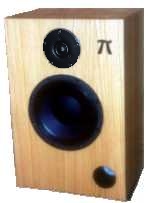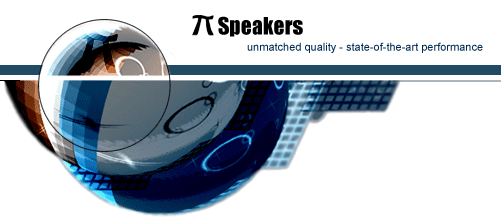one π loudspeaker performance data

The one "π" loudspeaker is our original model, designed in 1978. It has been continually updated over the years to take advantage of the most modern materials, but the original design is still very much intact.
It satisfies three basic requirements: The first requirement is that it must sound great. The second is that it sound great with little input power. And the third requirement is that it be relatively inexpensive. To reach these goals, we've used only the most efficient components.
The end result is a loudspeaker that is efficient enough to work well with low-power amplifiers yet durable enough to handle high power, delivering high sound pressure levels. The bottom line is these speakers put out plenty of great sound.
The one "π" speaker is perfect for use as a surround speaker in high-SPL home theaters. It's high sensitivity also makes it a great choice for bedroom or dormitory systems where low-power amplification is used.
| 






